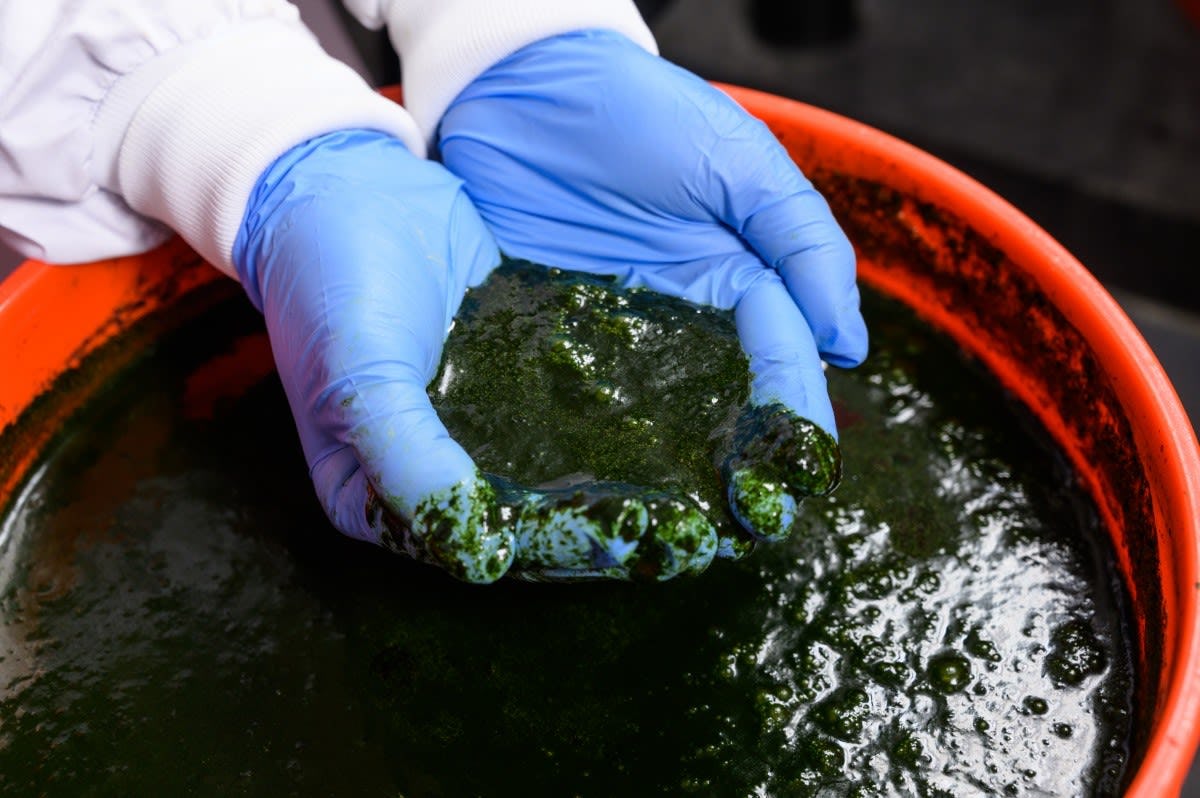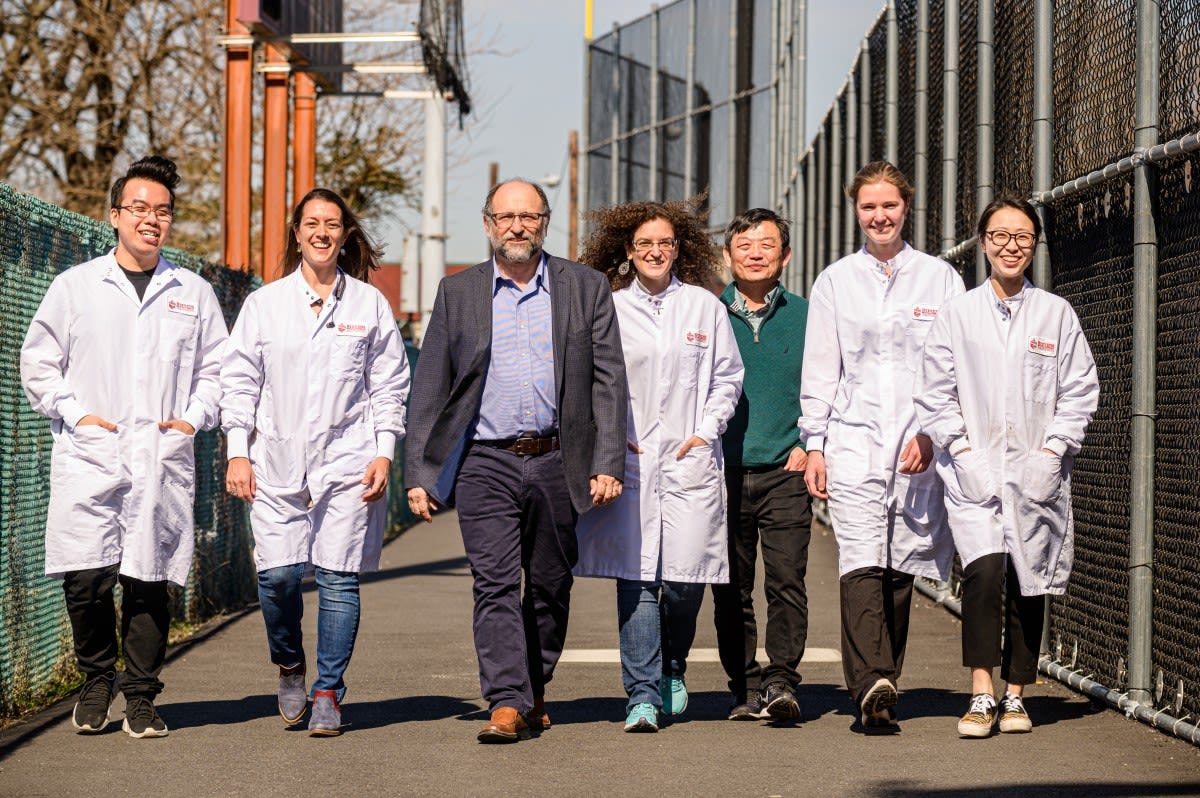Stevens researchers are using a green secret weapon to transform wastewater into clean energy
Stevens environmental engineering professor Christos Christodoulatos Ph.D. ’91 admits sustainability was about the last thing on his mind when he began his career nearly 30 years ago.
“When we had to clean a site that was contaminated, we didn’t think of how to clean it in the most effective way in terms of energy,” he explains. “We just wanted to clean it.”
Three decades later, balancing environmental impact with long-term natural resource management is now his topmost concern.
Since 2014, Christodoulatos, who is also director of the Stevens Center for Environmental Systems, has been leading a multi-million-dollar sustainability initiative funded by the U.S. Department of Defense. Part of the Army’s Net Zero Initiative established during the Obama administration, the multifaceted, multidepartmental project aims to improve energy efficiency, water consumption and solid waste reduction at military industrial base facilities through sustainability best practices.
“The target is to have zero emissions and zero waste,” Christodoulatos says.
One primary focus of the project entails generating biomass energy by cultivating microalgae on industrial wastewater. What began as 100-ml flask experiments in a campus lab three years ago has since grown to a field pilot study of 1,000-liter, oblong-shaped raceway reactors located in a munitions facility greenhouse in the southern U.S.
From Toxic Waste to Clean Energy
Wastewater from munitions manufacturing is rich both in carbon as well as in nitrogen, an element commonly found in plant fertilizer that can also be explosive.
By growing Scenedesmus obliquus algae on these industrial streams, researchers are able to repurpose these chemicals into plant sustenance, generating algal oil and biogas that can be converted into biofuels while simultaneously ridding the wastewater of compounds harmful to the environment.
The underlying methods can apply to any industry that produces nitrogen-rich streams, such as municipal wastewater treatment plants. Additional benefits include a reduction in a facility’s carbon dioxide footprint and reliance on fossil fuels, Christodoulatos says.
Environmental engineering doctoral student Andrew Mai M.Eng. ’17, who first began working with Christodoulatos as a master’s student, says the project affords new ways of thinking about recycling.
“You wouldn’t think right away, ‘Oh, I can use this [used] water to grow something else, and then use that to do something else, too,’” he says. “It adds a novel perspective to what reuse can really mean.”
Potential usable products resulting from the process include the manufacture of biopharmaceuticals, nutritional supplements and fortified foods and bioplastics, as well as power to generate electricity or fuel cars and public transportation vehicles.
Scaling Up
After nearly three years of bench-scale algae experimentation on campus, the first of two pilot-scale demonstrations at the munitions facility was completed last summer. Christodoulatos and his team applied knowledge gleaned in the lab to determine the parameters necessary to sustain algae growth at scale for extended periods.
Although algae is a fast-growing, high-yield feedstock, one major challenge of scaling up its production is avoiding contamination.
Because the algae is grown in ever-larger open ponds, “it’s very difficult to keep the algae culture you’re growing pure,” Christodoulatos says. High culture purity is particularly vital for use in pharmaceuticals.
Biomass output is another major concern in the scaling-up process. Microorganisms that feed on the algae can reduce algal yield, and the harvesting and algae concentration processes are energy intensive with high financial costs.
By growing algae attached to substrates rather than in the traditional method suspended in water, however, researchers were able to decrease their water usage while increasing biomass solids yield tenfold.
“It’s a very promising way of growing algae and would eliminate the need for concentrating the algae prior to using it for biodiesel or biogas production,” Christodoulatos says.
Student Impact
One of the largest research efforts on campus, the sustainability project engages 30 faculty and student researchers. Additional focus areas include systems analysis of facility operations, pre-treatment of wastewater to degrade explosive compounds and increasing algal oil and gas content to maximize biofuel output.
There are so many interrelated opportunities and tasks, in fact, that Mai describes working on the project as “almost like a startup.” Though his work is in environmental engineering, he’s enjoyed working with researchers in different fields, who are focusing on various aspects of this large research project, as part of an interdisciplinary team.
“I wasn’t just working on this one part but a part of this bigger group. It really gave me a good perspective on how technologies come to life and is allowing my dissertation to become part of applicable technology that’s actually being used somewhere,” Mai says.
Victoria Stabile ’20 M.Eng. ’20, who was one of this year’s first-in-class students for the Class of 2020, has derived a similar benefit from this research experience.
Having contributed to both increasing algae growth yields and improving biomass concentrations, she says “both of these experiences have been an amazing opportunity to learn how to work in a lab, design experiments and use the knowledge I’ve gained in class to solve real-world problems.”
With approximately half the research team composed of undergraduate, graduate and postdoctoral students, such student involvement is crucial to the project’s success.
“They’re part of the innovation process from the basic research to the design and execution of the experiments and field studies,” Christodoulatos says. Students also generate the majority of publications, he says, with over 25 journal articles produced from the project thus far.
A Green Future
The research team has analyzed the six months of data gathered from last year’s field study to further refine their approach and processes. As of this writing, Christodoulatos plans to conduct a two-month follow-up optimization study, based on these updated parameters, in summer 2020.
Christodoulatos expects they’ll be ready to scale up to 1-acre raceway reactor experiments by then and estimates final recommendations for full-scale implementation of their biomass energy technologies will be available in another year or two.
Through its expansive size and scope, the project, Christodoulatos believes, has contributed significantly to the Stevens community’s approach to sustainability, fitting it squarely within the university’s foundational pillar of resilience and sustainability.
“I definitely believe we motivate people to think more sustainably and apply these concepts on campus,” he says.
The project has also influenced Christodoulatos’ own sensitivity to the environment — a far cry from when he started 30 years ago.
“The whole project is a tremendous learning experience for me,” he says. “It also changed me because now I do think more sustainably than I used to, which is something I also integrate into the courses I teach. So I’m rewarded as a researcher but also as a teacher working on this project.”




